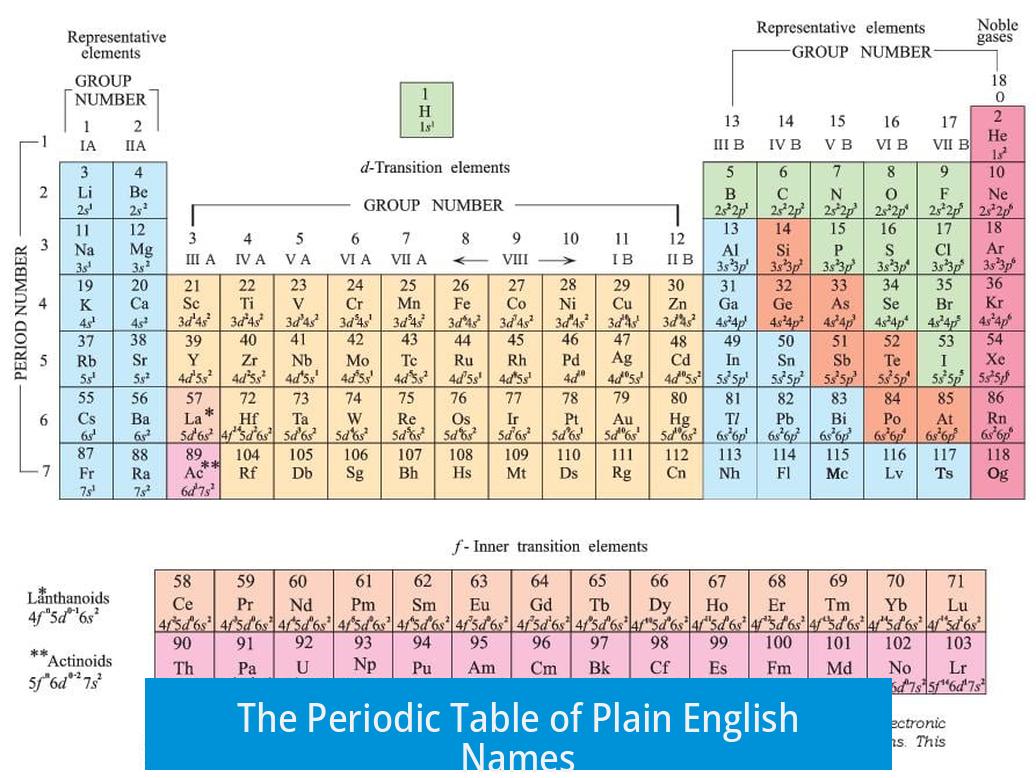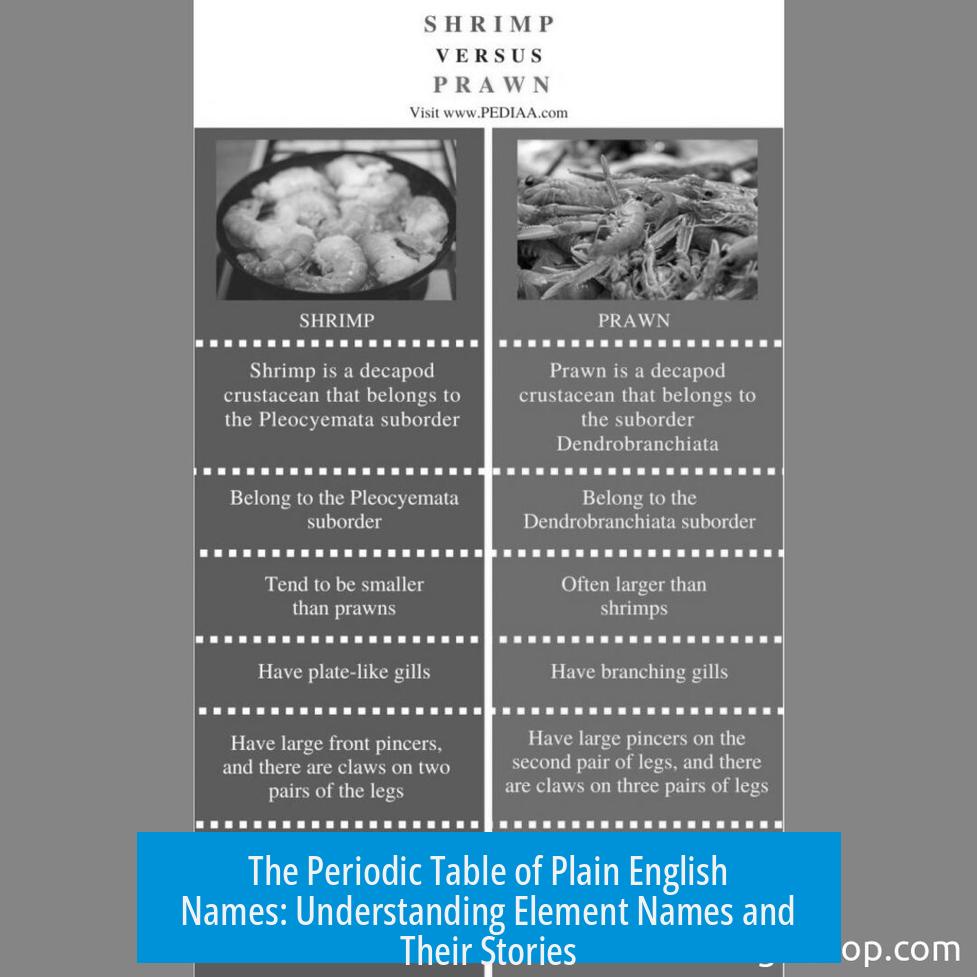The Periodic Table of Plain English Names

The Periodic Table of Plain English Names replaces traditional chemical element names with simple, descriptive, or humorous nicknames. This table reflects the history, characteristics, and cultural origins of elements, connecting scientific nomenclature to everyday language and stories.
Concept and Style

This periodic table opts for plain English names rather than scientific terms. Each element receives a nickname or descriptive phrase that is often literal or humorous. For example, oxygen is called “the acid maker,” highlighting its role in forming acids. Phosphorus proudly states, “I am the light bringer!”
The creator started with noble gases and expanded sporadically due to their busy schedule, sharing these infographics to engage and educate with a lighthearted tone. Elements receive individual personalities, inviting readers to see them beyond abstract symbols.
Etymology: Where Element Names Come From
Element names often originate from a variety of sources. Mythology plays a role: Helium is named after Helios, the sun god, and Selenium derives from Selene, the moon goddess. These ancient stories ground elements in cultural heritage.
Geography heavily influences naming. Some elements are named after countries (ruthenium after Russia), while others come from specific towns or regions (dubnium from Dubna, Russia). Notably, the Swedish village Ytterby inspired four names: yttrium, ytterbium, terbium, and erbium. This illustrates how places can leave a lasting mark on science.
Names may have indirect origins. Gadolinium owes its name to the mineral gadolinite, itself named after chemist Johan Gadolin. This kind of layered naming adds historical depth.
The interplay between language and clues to discoverers is also visible. Gallium’s name is linked to France (Gallia in Latin) and possibly a pun on the discoverer’s surname, Lecoq, meaning “rooster” in French, correlating to the Latin word gallus.
Interesting Naming Stories
- Magnesia, Magnesium, and Manganese: These elements share roots with ancient places in Asia Minor, like the city of Magnesia (modern-day Manisa, Turkey). Contrary to common assumptions, manganese doesn’t derive from magnets, nor is it magnetic.
- Antimony: Its name is unusual and comes with folklore, sometimes called the “monk-killer.” This nickname refers to historical dangers of its extraction or use, yet multiple etymologies compete.
- Tennessine: This element clearly honors Tennessee, reinforcing the trend of tying new discoveries to locations.
- Wolfram/Tungsten: The element’s dual names show cultural differences. “Wolfram” comes from the mineral wolframite, linked to the mythical “wolf’s foam,” while “tungsten” means “heavy stone” in Swedish.
- Copper and Cyprus: Interestingly, the island Cyprus takes its name from copper, not the other way around, highlighting the element’s economic importance in that region.
Scientific Names vs. Common Names
This table showcases the contrast between formal scientific names and the more accessible names chosen for the project. Some users want more details on the scientific or geographical roots behind names for clarity. For example, potassium’s symbol “K” derives from kalium in Latin, which doesn’t match the English name.
Others note confusions like silver’s association with Argentina (from Latin Argentum) or platinum once considered “unripe gold.” These observations highlight complexities in the history of element naming.
User Feedback and Educational Value
The design of the table invites mixed reactions. Some viewers find its colors and 3D effects engaging, while others criticize inaccuracies or style choices. Educators express interest in using the table as a classroom tool, requesting large-format prints for teaching.
Comments reveal debates about naming conventions, with some preferring stricter geographic references (e.g., “USA” instead of “America”) or clarifications about myths and legends linked to names.
Trivia and Fun Facts
- Mercury: Some suggest its color should be yellow, reflecting folklore or visual associations rather than the silver metal appearance.
- Fluorine: Named after “flux,” capturing its role as a highly reactive, flowing agent in chemical reactions.
- Lead and Potassium references: Internet culture also influences how elements are perceived, such as lead drawing jokes online.
Summary of Core Insights
- The Periodic Table of Plain English Names simplifies element names using nicknames linked to history, mythology, and chemistry.
- Geography and culture heavily influence element naming. Various naming origins can be direct or indirect.
- Some elements have unique or puzzling names with folklore and scientific layers combined.
- The project blends humor and education, appealing to a wide audience but also drawing critique over accuracy or style.
- It provides a novel approach to making chemistry accessible, encouraging engagement beyond memorization.





Leave a Comment